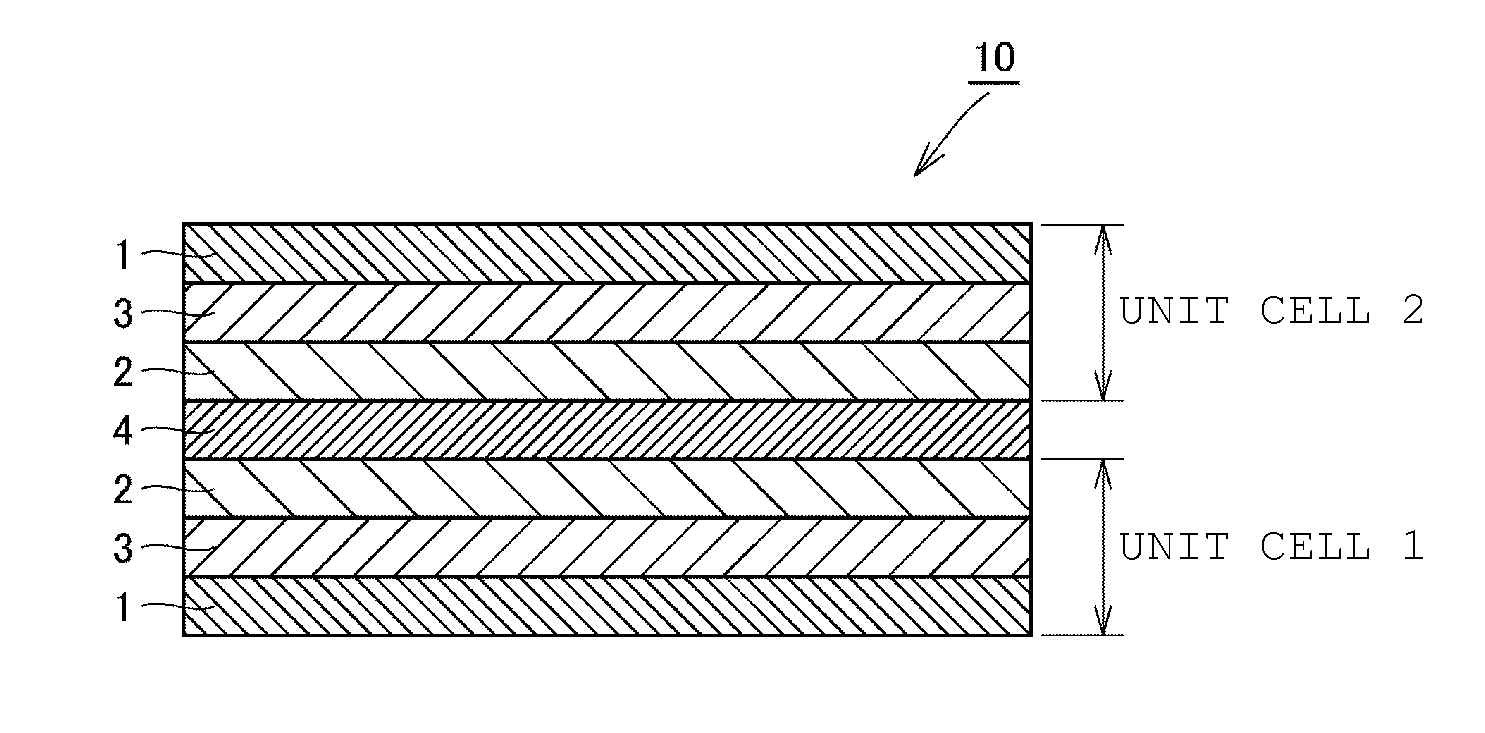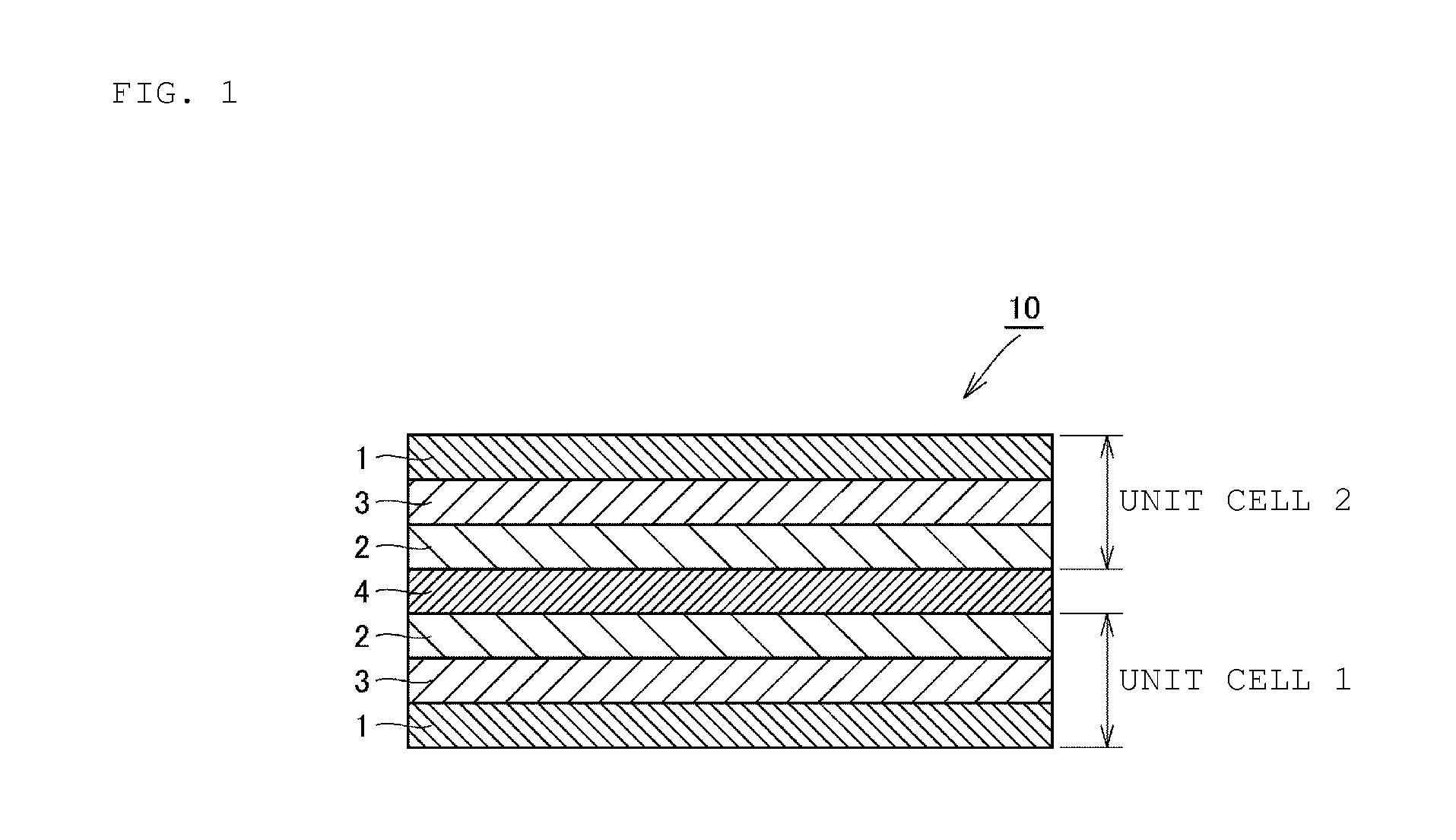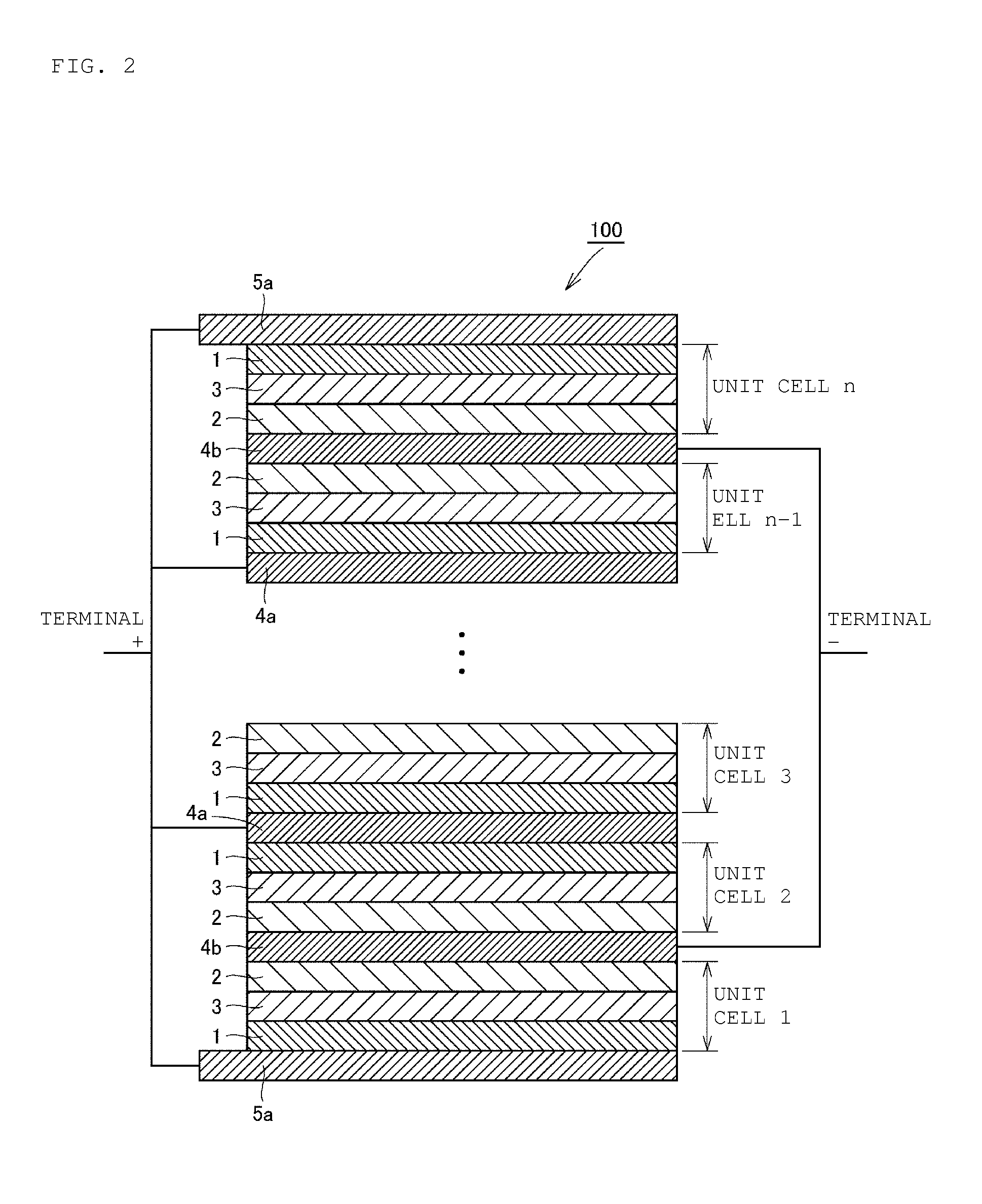Layered solid-state battery
a solid-state battery and layered technology, applied in the direction of cell components, final product manufacturing, sustainable manufacturing/processing, etc., can solve the problem of leakage of electrolytic solution, and achieve the effect of stable output voltag
- Summary
- Abstract
- Description
- Claims
- Application Information
AI Technical Summary
Benefits of technology
Problems solved by technology
Method used
Image
Examples
first embodiment
[0038]First, a layered body that forms a basic structure of a layered solid-state battery will be described as a first embodiment of the present invention. Here, in each of the later-described embodiments of the present invention, the planar shape of the layered body is not limited; however, description will be given assuming that the shape is generally a rectangular shape.
[0039]As illustrated in FIG. 1, in a layered solid-state battery 10, a (unit cell 1) and a (unit cell 2) are stacked with an internal collection layer 4 intervening therebetween. Each of the (unit cell 1) and the (unit cell 2) is constituted of a positive electrode layer 1, a solid electrolyte layer 3, and a negative electrode layer 2 that are sequentially stacked.
[0040]The (unit cell 1), the (unit cell 2), and the internal collection layer 4 are stacked so that the negative electrode layer 2 of the (unit cell 2) is adjacent to one side surface (the upper surface in FIG. 1) of the internal collection layer 4, and ...
second embodiment
[0060]Next, as a second embodiment of the present invention, a layered solid-state battery having a layered solid-state battery 10 illustrated in FIG. 1 as a basic structure will be described. FIG. 2 is a cross-sectional view schematically illustrating a cross-sectional structure of a layered solid-state battery in the case where an even number of unit cells are provided, and FIG. 3 is a cross-sectional view schematically illustrating a cross-sectional structure of a layered solid-state battery in the case where an odd number of unit cells are provided.
[0061]As illustrated in FIG. 2, in the same manner as in FIG. 1, in a layered solid-state battery 100, n pieces (an even number) of (unit cells 1 to n) are stacked with internal collection layers 4a, 4b intervening therebetween. As illustrated in FIG. 3, in the same manner as in FIG. 1, in a layered solid-state battery 200, n+1 pieces (an odd number) of unit cells are stacked with internal collection layers 4a, 4b intervening therebet...
examples
[0070]Hereafter, Examples of the present invention will be described.
[0071]An Example in which a layered solid-state battery according to the second embodiment of the present invention was actually fabricated will be described.
[0072]
[0073]Active substance powder including a lithium-containing vanadium phosphoric acid compound (Li3V2(PO4)3) (hereafter referred to as LVP) as an active substance material and carbon powder as an electrically conductive agent was synthesized by the following procedure.
[0074](1) The powders of Li2CO3, V2O5, and (NH4)2H(PO4)3 as raw materials were mixed in a mortar so as to attain a stoichiometric ratio of LVP.
[0075](2) The obtained mixed powder was fired at a temperature of 600° C. for 10 hours in an air atmosphere.
[0076](3) To the obtained fired powder, carbon powder as an electrically conductive material was added and mixed in a mortar.
[0077](4) The obtained mixed powder was fired at a temperature of 950° C. for 10 hours in an argon gas atmosphere.
[0078...
PUM
| Property | Measurement | Unit |
|---|---|---|
| temperature | aaaaa | aaaaa |
| temperature | aaaaa | aaaaa |
| thickness | aaaaa | aaaaa |
Abstract
Description
Claims
Application Information
 Login to View More
Login to View More - R&D
- Intellectual Property
- Life Sciences
- Materials
- Tech Scout
- Unparalleled Data Quality
- Higher Quality Content
- 60% Fewer Hallucinations
Browse by: Latest US Patents, China's latest patents, Technical Efficacy Thesaurus, Application Domain, Technology Topic, Popular Technical Reports.
© 2025 PatSnap. All rights reserved.Legal|Privacy policy|Modern Slavery Act Transparency Statement|Sitemap|About US| Contact US: help@patsnap.com



